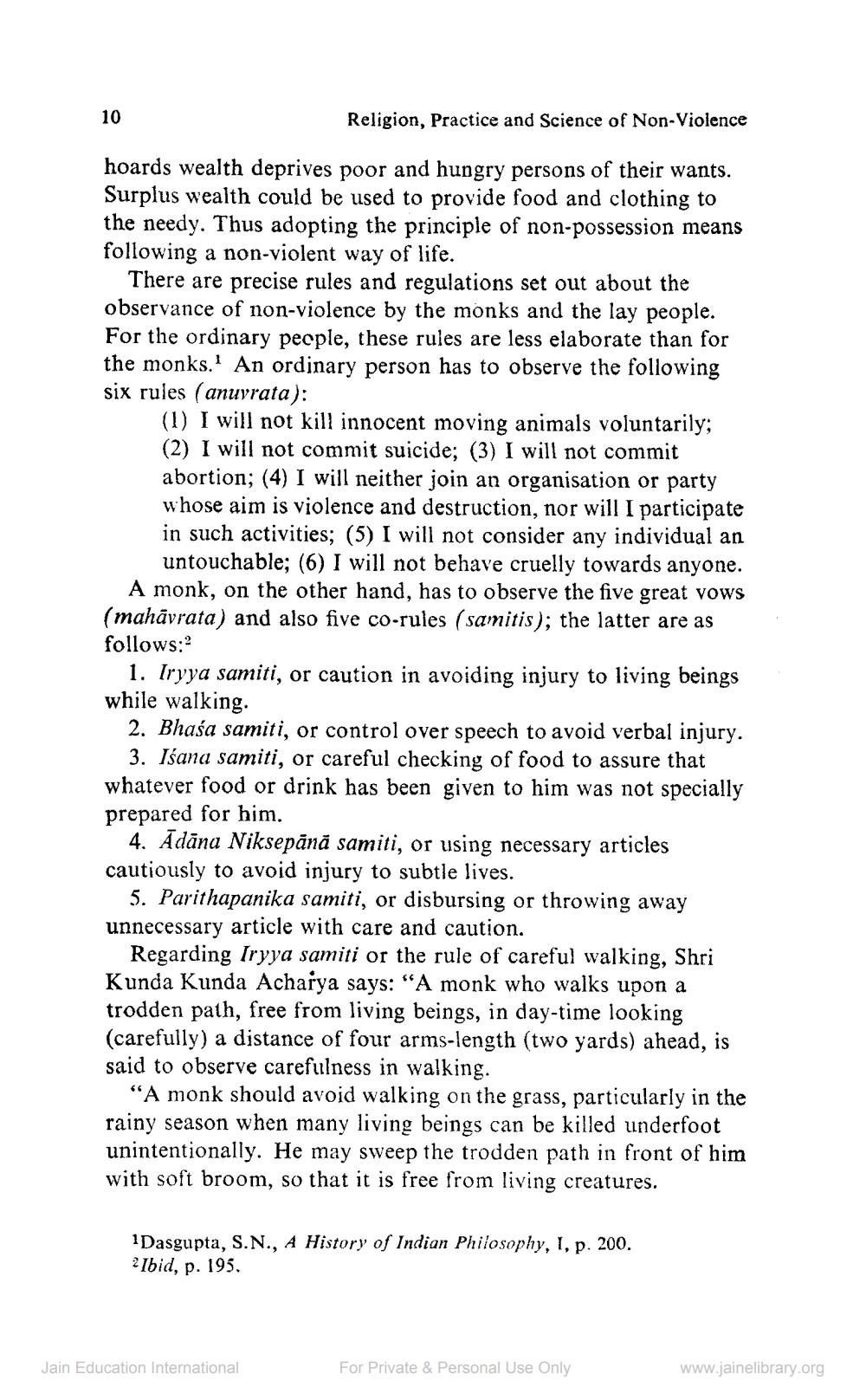________________
Religion, Practice and Science of Non-Violence
hoards wealth deprives poor and hungry persons of their wants. Surplus wealth could be used to provide food and clothing to the needy. Thus adopting the principle of non-possession means following a non-violent way of life.
There are precise rules and regulations set out about the observance of non-violence by the monks and the lay people. For the ordinary people, these rules are less elaborate than for the monks. An ordinary person has to observe the following six rules (anuvrata):
(1) I will not kill innocent moving animals voluntarily; (2) I will not commit suicide; (3) I will not commit abortion; (4) I will neither join an organisation or party whose aim is violence and destruction, nor will I participate in such activities; (5) I will not consider any individual an
untouchable; (6) I will not behave cruelly towards anyone. A monk, on the other hand, has to observe the five great vows (mahāvrata) and also five co-rules (samitis); the latter are as follows:
1. Iryya samiti, or caution in avoiding injury to living beings while walking
2. Bhasa samiti, or control over speech to avoid verbal injury.
3. Išana samiti, or careful checking of food to assure that whatever food or drink has been given to him was not specially prepared for him.
4. Ādāna Niksepānā samiti, or using necessary articles cautiously to avoid injury to subtle lives.
5. Parithapanika samiti, or disbursing or throwing away unnecessary article with care and caution.
Regarding Iryya samiti or the rule of careful walking, Shri Kunda Kunda Acharya says: "A monk who walks upon a trodden path, free from living beings, in day-time looking (carefully) a distance of four arms-length (two yards) ahead, is said to observe carefulness in walking.
“A monk should avoid walking on the grass, particularly in the rainy season when many living beings can be killed underfoot unintentionally. He may sweep the trodden path in front of him with soft broom, so that it is free from living creatures.
1 Dasgupta, S.N., A History of Indian Philosophy, I, p. 200. 2 Ibid, p. 195.
Jain Education International
For Private & Personal Use Only
www.jainelibrary.org




